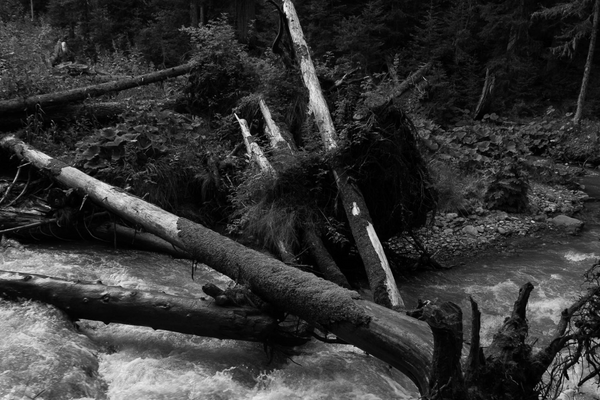
Tucked away in the shadowy annals of SBS On Demand, along with all the stuff you used to discover on the channel at 2am on a sleepless night, is a strange and rather wonderful should-be Australian classic: a children’s adventure film from 1986 called Frog Dreaming.
Frog Dreaming (variously retitled The Quest and The Go Kids for the world market) plays like a lost tradition of politically incorrect kids’ cinema. Its boy hero is a 15-year-old American called Cody (played by Henry Thomas, the star of ET) who lives in an idyllic Australian valley town. A boy MacGyver equipped with an extensive bank of practical knowledge, Cody is resourceful, unsurprised by anything and ready for everything. One dull day, he takes his two buddies, Wendy and Jane, to venture into Devil’s Knob national park, which he says is full of “frog dreamings, like sacred sites”. There they stumble on a pond haunted by a monster, which Cody says is alluded to in local Indigenous stories.
As is traditional in children’s movies, most of the numbskull grownups dismiss the kids’ discovery as a “bunyip theory” – after all, the watering hole isn’t even on the map – but Cody knows that he’s on to something. His guardian, Gazza (Tony Barry), points him in the direction of local Indigenous man Charlie Pride (Dempsey Knight), and Cody finds himself pulled into a world of earthly peril and lofty spirit business.
Frog Dreaming’s director, Brian Trenchard-Smith, is best known for Ozploitation-era B-movies – most famously BMX Bandits – and part of what makes the film great is its low-budget appeal. The monster itself is fantastically junky in its design, seemingly wrought from cardboard boxes, plastic garbage bags and gaffa tape. And how many other films have costumes evidently sourced entirely from the Bonds aisle in K-Mart?
Frog Dreaming also delivers some of the best, most un-PC dialogue ever written for kids, in brutal Australian tones and peppered with exclamations such as “bloody” and “holy shit”. When Wendy, approaching the watering hole, asks, “Yuck, what’s that smell?” Jane quips: “Probably your breath blowing back on your face.”

Despite its DIY aesthetic, Frog Dreaming is clearly a skilled and imaginative piece of adventure film-making, from the opening sequence (shot like a horror film to reveal the monster’s most recent victim) to the way that the camerawork captures the feeling of walking through the bush (the dappled shadows, lush green canopy, giant ferns and great mossy tree trunks – you can practically feel the coolness of the forest air).
At the same time, it doesn’t just capture a world of Casio stopwatches and satin scrunchy headbands but develops its own mythology. So many childrens’ films today are overly clever and infused with irony, but the scene in which Cody meets Charlie Pride on a deep blue night on a long jetty lit with yellow lamps is as magical as the best moments in Ferngully, the more famous fantasy film of that era. Cleverly structured to withhold the monster’s full reveal until the final minutes, the script knows its action-thriller origins.
Australian critic David Stratton was fairly dismissive of the film in his book about 80s Australian cinema, The Avocado Plantation, but other writers such as Garry Gillard have taken it a bit more seriously, identifying its astute sense of kid logic, especially when it comes to the characters’ growing but still immature sexual awareness.
Cody (characterised as a bit of a future ladykiller), Wendy and Jane all have that adolescent mentality that combines a growing obsession with sex with total cluelessness, revulsion and knowledge that the experience looms in their future. At one point Jane accidentally makes a grand Freudian slip, calling the national park “Devil’s Cock”. Wendy asks her mum if you can get herpes from French kissing, and Jane gets grossed out by a handful of tadpoles in the watering hole: “Yuck! They look like sex!” There’s really nothing like this in kids’ films today.

Fortunately, you see much less of Frog Dreaming’s dopey, casual racism these days, too. It’s the type of film that thinks it’s really progressive – indeed, the Aboriginal flag pops up twice, once as a sticker on Cody’s dirtbike and again recreated in a wide shot of the sunset sky – but is hopelessly stereotypical in its presentation of Indigenous people and cultures. Charlie Pride is a local incarnation of the magical negro trope, a black man who watches over the white protagonist from a clifftop and generally only pops up to propel the plot along. The film’s other Indigenous characters are nameless and purely utilitarian.
Viewing Frog Dreaming with a critical eye, you can get a fresh historical perspective on what has and hasn’t changed in how popular culture handles Indigenous representation.
Frog Dreaming nevertheless takes its spiritual side seriously, and that sincerity infuses the film with an unexpected depth. The contradiction is that the final scenes offer quite a decisive comment on the spirituality that’s latently and inauthentically exploited throughout: we sense that there really is a Dreaming. The discovery is seen through Cody’s eyes, the implication being that it takes a curious kid, who hasn’t been placated by the norms of grown-up life, to notice.
Every frame of this film is suffused with madness and love, as well as a strong sense of teen injustice – that feeling that the adults are the ones in control of their lives while kids have to lie and sneak around just to have fun. This is a very fine, overlooked piece of fantasy film-making.
• Frog Dreaming is streaming via SBS On Demand until 6 August







